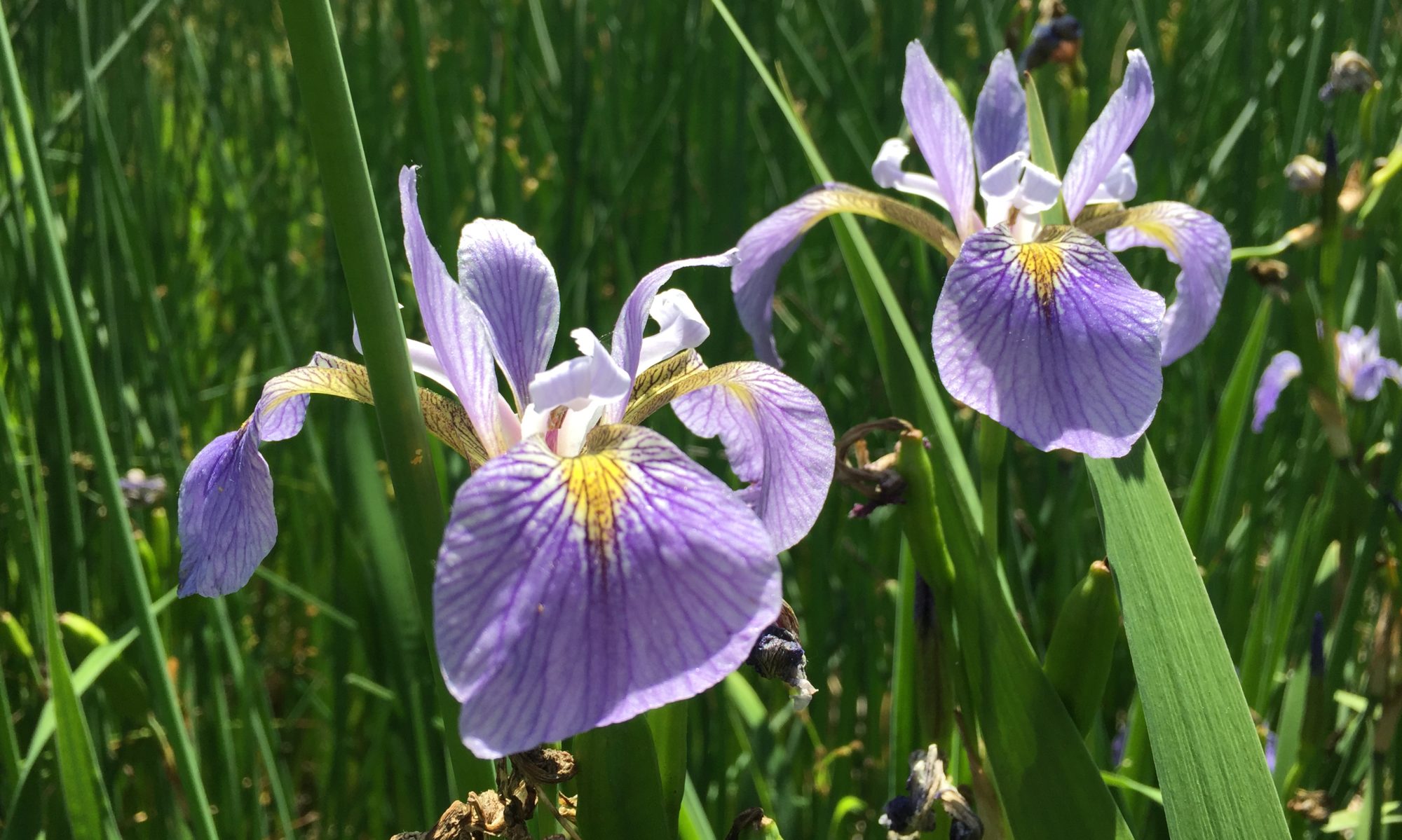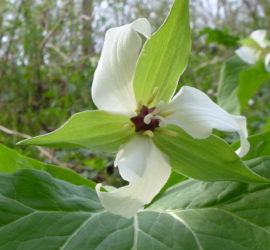OUT AND ABOUT IN MORRIS PARK THIS PAST WEEK, THERE ARE FRESH YOUNG TREE LEAVES, FLOWERING HERBACEOUS PLANTS AND LOTS OF GREEN GROWING THINGS. THE WEEK-LONG RAINSTORM FOLLOWED BY A FEW DAYS OF SUN HAVE CREATED A LUSH FOREST.
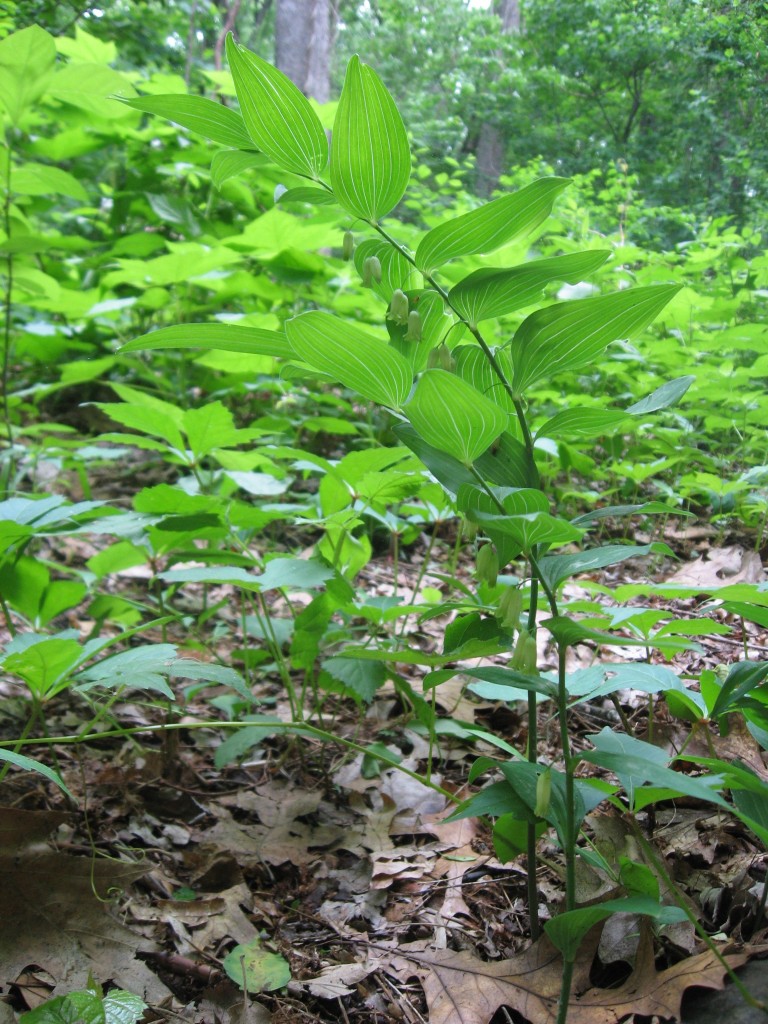
POLYGONATUM BIFLORUM
The Solomon’s seal is blooming. Â The white bell-shaped flowers hang in pairs on the Biflorum.
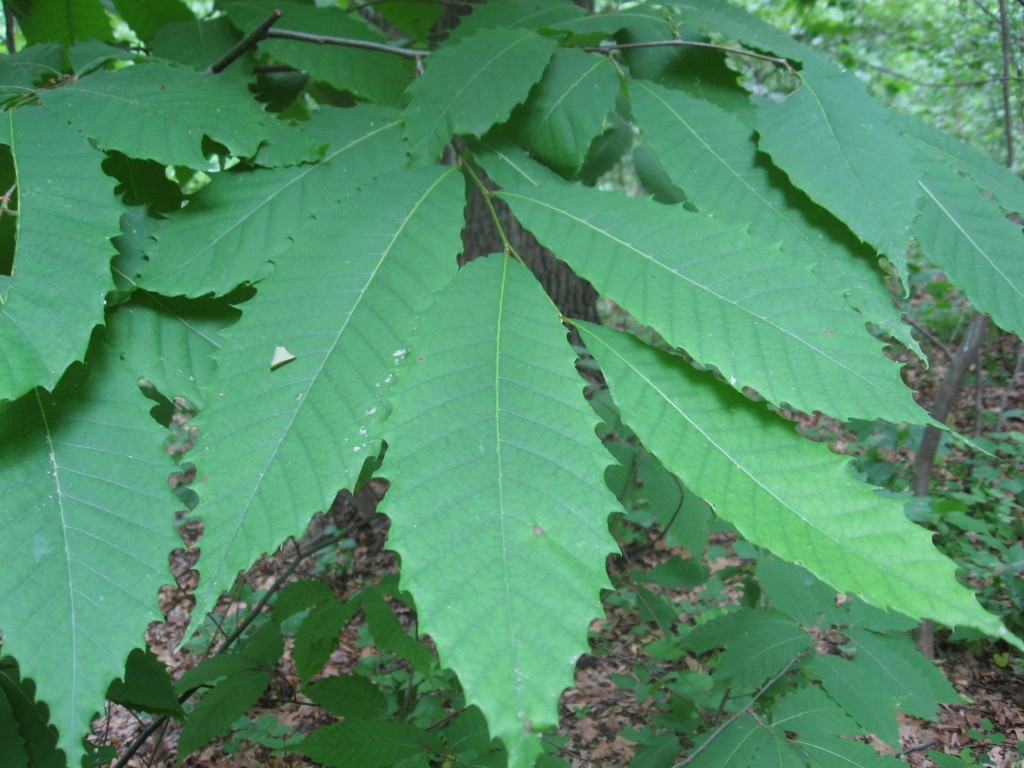
The young leaves of Castanea dentata, the American Chestnut. Â If all goes well, native insects will start in on these, which is great because then there are lots of insects for birds to feed on. Â Good to get a shot of a leaf yet undisturbed.

SMILACINA RACEMOSA
The False Solomon’s seal is blooming.
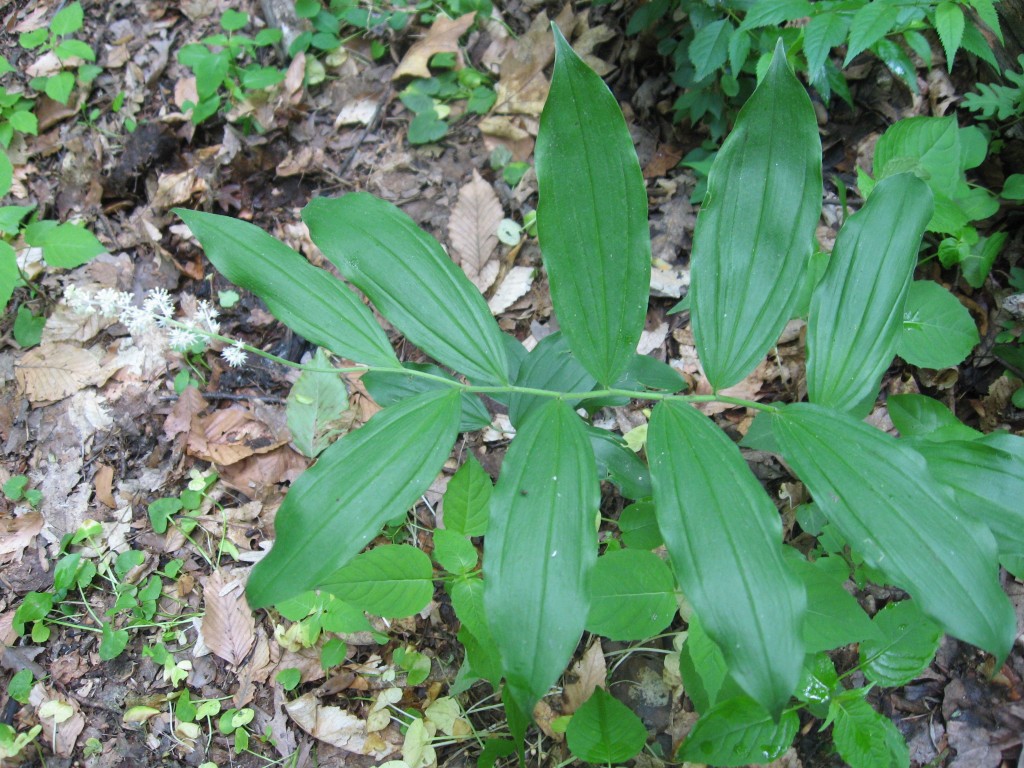
The blooms of Liriodendron tulipifera , the Tulip Poplar, are best viewed from ones that have broken off the tree and have landed on the ground in one piece.
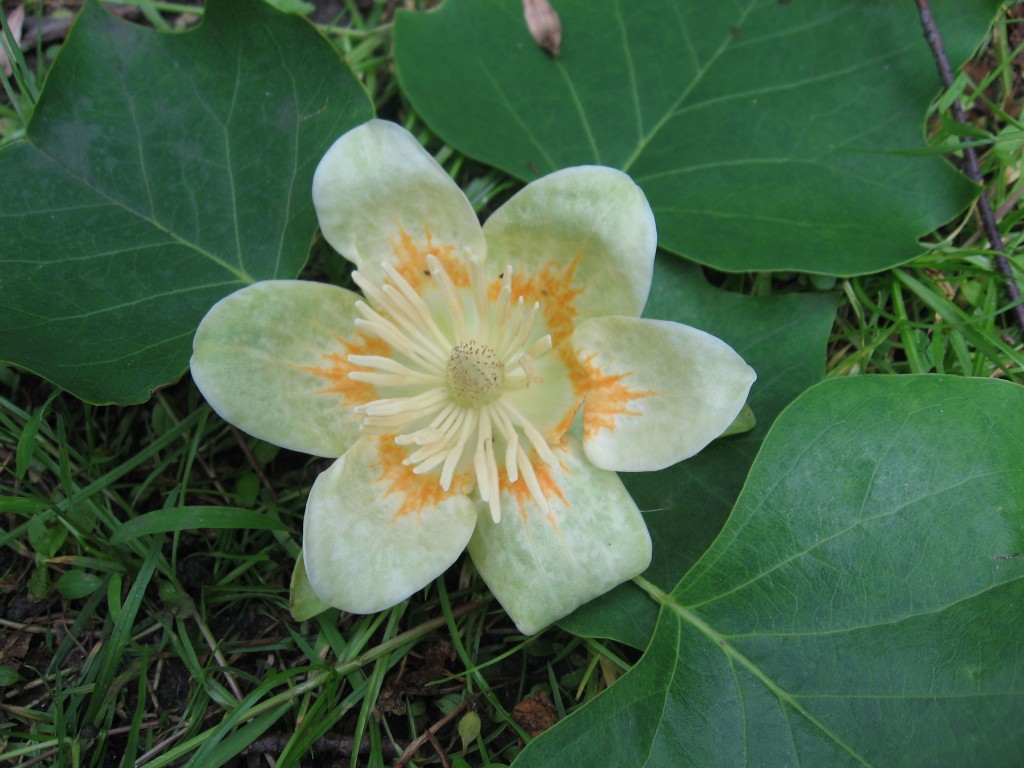
Below, the Lonicera sempervirens, the native honeysuckle is blooming away next to its fused, perfoliate leaf. This is a signature characteristic of this vine, where only the last leaf before the flower is one round or oval leaf that looks like two leaves fused together and the rest of the leaves are single, simple leaves. Â This is a favored flower for hummingbirds. Â Maybe the big fused leaf has evolved in order to provide a good contrasting backdrop to the red flowers, so they are not missed by the hummingbirds that pollinate them. Â The fused leaf adds just that much more botanical interest to this vine.
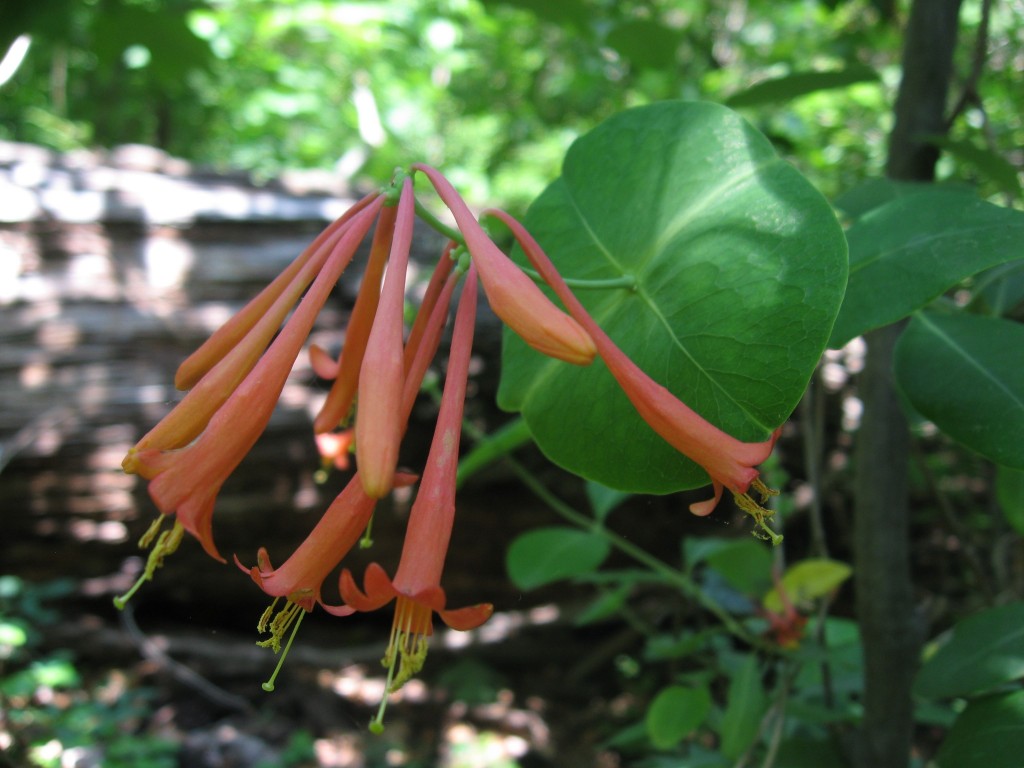
The next picture is a dead, mature oak tree, leaving us with only a handful of the old forest left. Â A standing dead tree is called a snag. The good news about this snag is that there are numerous oak seedlings and saplings all around it, and there are a handful of park volunteers and staff active in protecting this future forest from the harsh realities of an urban setting. Â An infestation of the Japanese Angelica tree (Aralia elata)has permeated the area all around the oak snag, threatening to shade out the young trees. Â Serious efforts have been made in an ongoing plan to control the Japanese Angelica tree. Â Also in the immediate area is the exotic invasive Garlic mustard (Alliaria petiolata), which threatens tree seedlings and saplings by altering the beneficial soil fungi that are important in tree root growth. Â Only just this season was an effort initiated by the Sanguine Root to control this invasive, a plan that will take at least 5 years of consistent hand-pulling on a yearly basis.

As we are sad that the old oaks are dying off, this woodpecker on the left side of the snag, towards the top third of the picture above, is quite happy with the situation. Long after death, this tree will provide an important role in the native ecosystem.
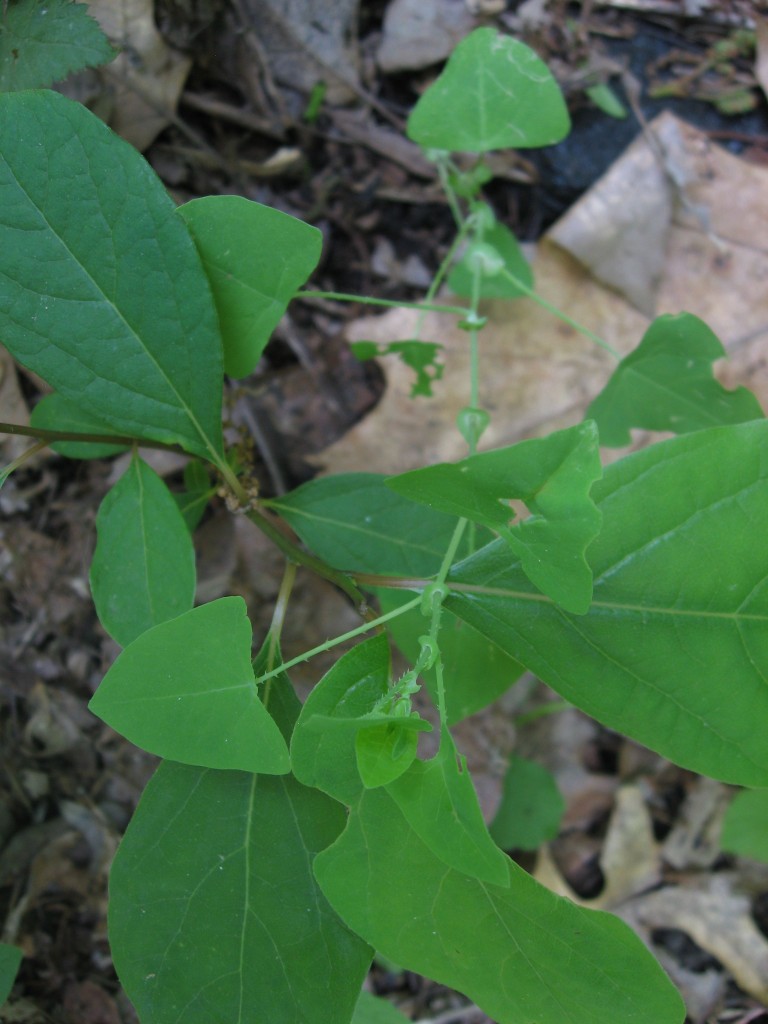
Persicaria perfoliata
The photograph above, taken just yards away from the last scene is of yet another threat to the ecosystem. Â This one is an emerging threat in Morris Park, and one that sounds alarm bells whenever it is found. Â This is the Mile-a-Minute exotic invasive. Â Note the thorns along the stem, and also how the stem comes up through the middle of the small leaves. (These leaves, like with the Lonicera sempervirens, are also considered perfoliate). Â This one threatens the Spicebush seedling below it in the picture.
This plant represents a clear danger to Morris Park, and we pull seedlings immediately wherever and whenever they are found. Â There is one area in Morris Park where it appears that soil was imported from elsewhere to fill in an eroded section of streambank along Indian Creek. Â The Mile-a-Minute grows abundantly from this soil, and we have spent some time removing the seedlings.
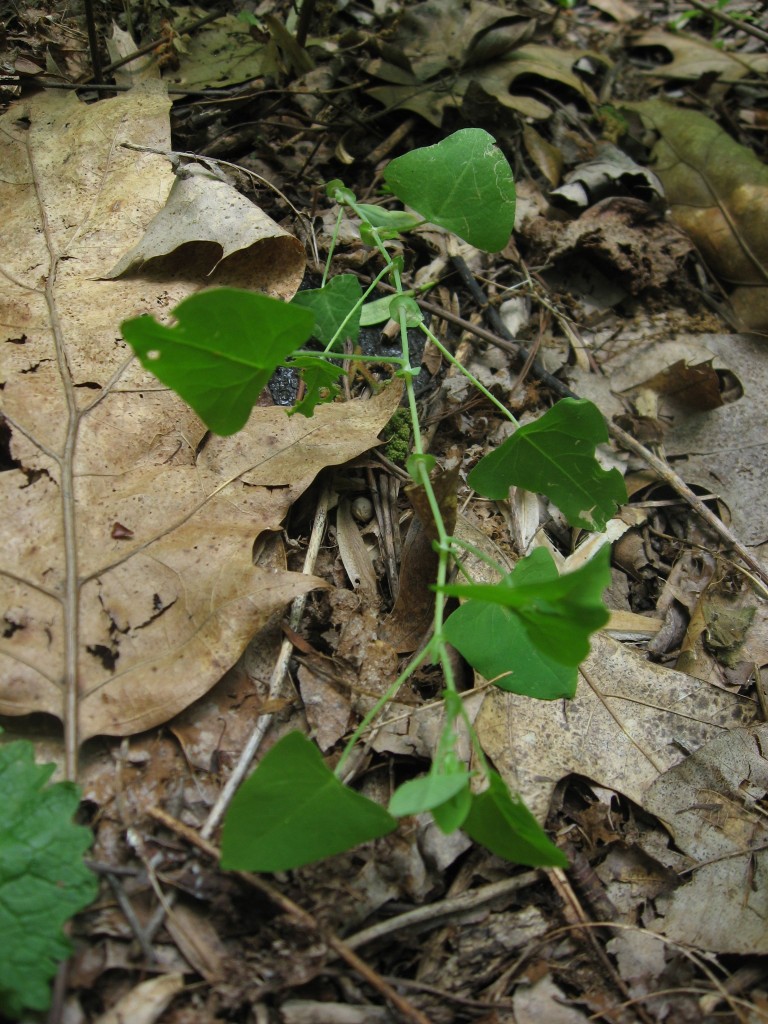
If you see this in your yard, or in an area of land in which you have a stewardship role, it is highly recommended that after you have investigated it further for your own well rounded knowledge, that it be yanked out from there after.

Sanguinaria canadensis
Not wanting to end this late Spring post with the dreaded Mile-a-Minute, we bring you the true harbinger of Late Spring, the first Bloodroot plant to break open its seed pouch. Â This event is the beginning of the final stages of Springtime, just like how the first flower of Bloodroot is the very beginning of Spring. This event was unfolding in a wooded location off the trails, and found during a routine Garlic-mustard removal second-pass exercise. Â The next few weeks will keep the ants busy as they haul off the bloodroot seeds so they can harvest the fleshy elaiosome that attaches the seed to the pod structure. Â While the elaiosome is desired as a food source, the seed itself is discarded in the ant waste pile, a well-drained place rich in nutrients, a place perfectly suited for the seed to germinate in, located far enough away from the parent plant to help the species spread. When this has been achieved, and the Bloodroot is just a leaf on a stem, then Spring is over.
